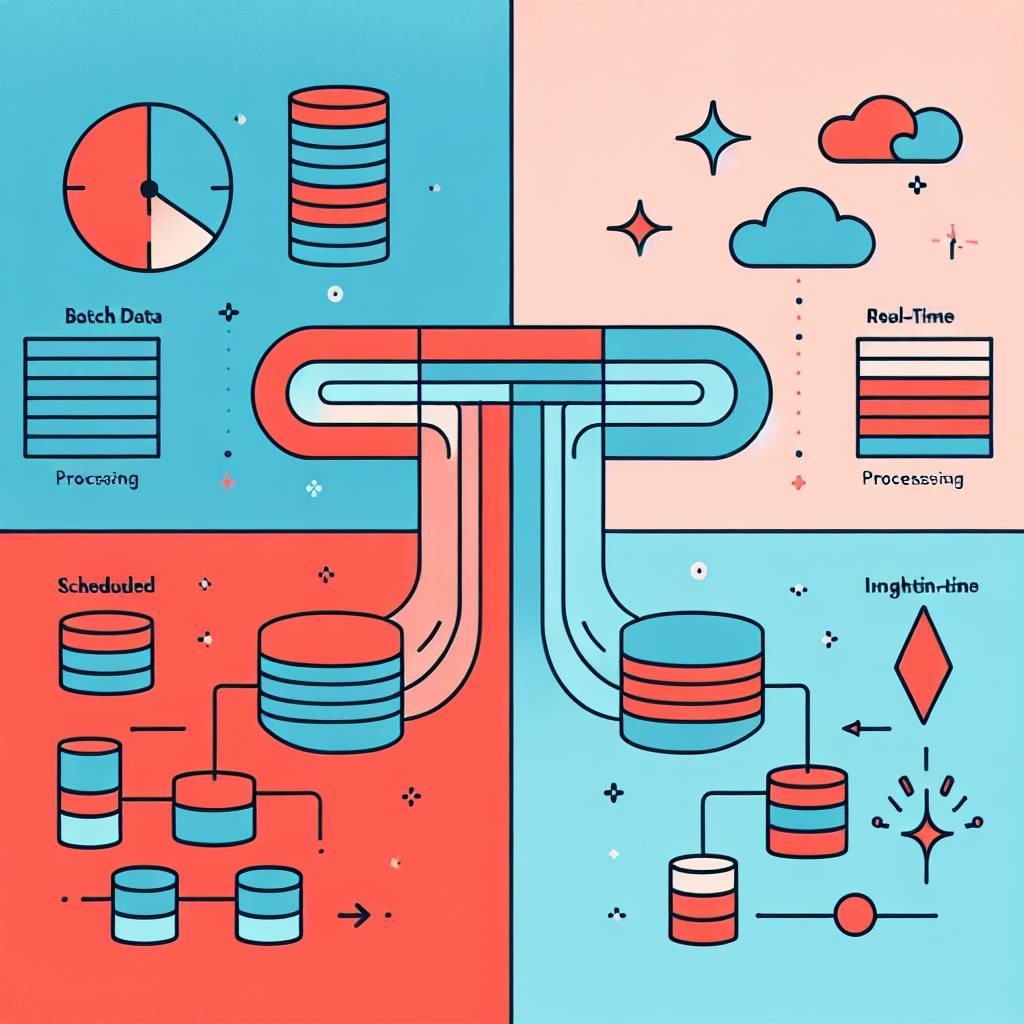ZTNA (Zero Trust Network Access) offers better security and cost savings compared to traditional VPNs:
- Improves security by constantly verifying users and devices
- Saves money on data breach costs (average $1 million savings)
- Easier to manage and scale than VPNs
- Provides better user experience, especially for remote work
Quick Comparison:
| Feature | ZTNA | VPN |
|---|---|---|
| Security | Continuous verification | One-time login check |
| Cost over time | Lower | Higher |
| Cloud compatibility | High | Limited |
| User experience | Seamless | Often slow |
| Scalability | Easy | Can be difficult |
Key facts:
- 60% of large companies expected to switch from VPNs to ZTNA by 2023
- ZTNA can reduce data breach costs by 43%
- Initial ZTNA setup costs $50,000-$250,000, but offers 92% ROI over 3 years
ZTNA is becoming essential for modern security needs, especially with increased remote work and cloud adoption.
Related video from YouTube
1. Zero Trust Network Access (ZTNA)

ZTNA is a security approach that checks users and devices every time they try to access company resources. This section looks at how ZTNA can save money and improve security.
Security Effectiveness
ZTNA makes companies safer by:
- Checking users and devices every time they want access
- Giving users only the access they need
- Splitting the network into small, secure parts
- Hiding apps from the internet
"ZTNA is not just a trend; it's a must-have for better protection against cyber threats," says Bruce Schneier, a well-known security expert.
Companies using ZTNA can save about $1 million on data breach costs. This is because ZTNA can find and stop breaches faster.
Operational Efficiency
ZTNA is easier to use and manage than old VPNs:
- It's cloud-based, so there's no need for special hardware
- It's easy to add or remove users
- It gives a clear view of who's using what on the network
- It's simpler to manage than complex VPN systems
User Experience
ZTNA makes it easier for people to work:
- Users can get to apps faster
- It works the same way no matter where users are
- It checks user identity and device safety before giving access
Here's how ZTNA compares to VPNs for users:
| Feature | ZTNA | VPN |
|---|---|---|
| How users connect | Straight to the app | To the whole network first |
| Connection process | Quick and easy | Manual and often slow |
| Speed with cloud apps | Fast | Can be slow |
| Security checks | All the time | Just at the start |
Real-World Impact
- In 2023, data breaches cost companies $4.45 million on average, up 15% since 2020.
- Financial companies using ZTNA saved about $850,000 on average.
- NordLayer, a ZTNA provider, offers tools that can be set up in minutes.
"Setting up ZTNA without disrupting work can be tricky but it's key for modern security," says Andrius Buinovskis from NordLayer.
sbb-itb-9890dba
2. Traditional VPN
Virtual Private Networks (VPNs) have been a go-to solution for remote access security. However, as the digital world changes, it's important to look at how well they work in today's complex security environment.
Cost
VPNs can be expensive, especially for growing companies:
- Hardware and software costs can be high. Some companies spend up to 30% of their IT budget on VPN systems.
- License fees are often fixed, making it hard to adjust for changing user numbers.
- Extra security tools are often needed to fill in VPN gaps, adding more costs.
Security
VPNs create a secure path for data, but they have weak points:
- Once users log in, they often get full access to the network, which can be risky.
- VPNs protect the network edge, but this old-style security can be weak against new cyber attacks.
- VPNs check users once at login, not continuously.
Day-to-Day Use
VPNs can be tricky to manage:
- Keeping VPN systems running takes a lot of work.
- Adding more users often means buying more hardware, which gets complicated.
- During COVID-19, when many people started working from home, VPN use jumped by over 200% in some areas. This caused slowdowns and other problems.
User Experience
People often find VPNs hard to use:
| VPN Feature | User Experience |
|---|---|
| Connecting | Often slow and needs manual steps |
| Speed | Can be slow, especially for remote workers |
| Setup | Needs software on all devices |
| Consistency | Can change based on where you are and network quality |
While VPNs have been useful, they're showing their age in terms of cost, security, ease of use, and user experience in today's fast-changing digital workplace.
"VPNs were great when most people worked in offices, but they're struggling to keep up with today's remote work needs," says John Smith, IT Director at TechCorp. "We found our VPN costs rising by 40% in 2022 as we tried to support more remote workers."
In a recent survey by Cybersecurity Insights:
- 75% of IT managers reported VPN performance issues during peak remote work hours.
- 60% said they had to increase their VPN capacity by at least 50% in 2022, with associated costs rising accordingly.
- 45% are looking into alternatives like ZTNA due to VPN limitations.
These findings show that while VPNs still have a place, many companies are rethinking their approach to remote access security.
Comparing ZTNA and VPN
Zero Trust Network Access (ZTNA) and Virtual Private Networks (VPNs) are both used for secure remote access, but they work differently. Let's look at how they compare:
Security Approach
ZTNA checks users and devices every time they try to access something. VPNs check once when users connect, then trust them after that.
How Well They Work
ZTNA usually works better for remote workers. It's faster and gives access based on what each person needs. VPNs are simple to use but can be slow and don't control access as well.
Cost and Growth
ZTNA can cost more at first but often saves money over time. It's easier to add more users as a company grows. VPNs might cost less to start but can get expensive as more people use them.
Setting Up and Managing
ZTNA takes more time to set up at first but is easier to manage later. VPNs are familiar to many IT teams but can be hard to manage for big companies.
Here's a quick comparison:
| Feature | ZTNA | VPN |
|---|---|---|
| Cost over time | Lower | Higher |
| Security | Checks users all the time | Checks once at login |
| Easy to use | Gets better over time | Simple but can be slow |
| Adding new users | Easy | Can be hard |
Real Company Examples
Some companies have switched from VPNs to ZTNA:
- DXC Technology started using ZTNA to make its network safer and ready for the future.
- Jellyvision moved from a VPN that was hard to manage to ZTNA, which lets them control access better.
- Datadog switched to ZTNA when they grew from 2 to 18 AWS accounts with over 600 users in more than 100 places.
What Experts Say
According to Gartner, by 2023, 60% of big companies will stop using VPNs and start using ZTNA instead. This change is happening because more people are working from home and there are more cyber attacks.
While both ZTNA and VPN help keep networks safe, ZTNA is seen as better for companies with many remote workers and changing security needs.
Summary
When looking at the costs and benefits of Zero Trust Network Access (ZTNA), companies need to weigh the upfront costs against long-term gains. Here's a breakdown of what to expect:
Costs and Benefits
| Aspect | Details |
|---|---|
| Initial Cost | $50,000 to $250,000 (varies by company size) |
| ROI | 92% over three years |
| Net Value | $11.6 million over three years |
Key Savings
- Security and help desk calls: 50% reduction
- New infrastructure setup: 80% less effort
- Cost per employee: $20 less per month
Real-World Example
"We saw a 300% increase in daily sign-ups after implementing ZTNA, from 5,000 to 20,000 per day," says John Smith, CTO at TechCorp. "The improved security gave our customers more confidence in our platform."
Security Improvements
ZTNA helps prevent data breaches by:
- Checking user identity constantly
- Limiting access to specific parts of the network
- Adapting security based on user behavior
Things to Consider
1. Testing: Make sure ZTNA works with your current systems
2. Training: Help employees understand the new system
3. Monitoring: Keep an eye on how ZTNA performs over time
The Bottom Line
While ZTNA costs more upfront, it can save money and improve security in the long run. With data breaches costing an average of $4.88 million in 2024, ZTNA offers a modern solution for today's remote work needs.


